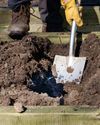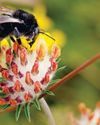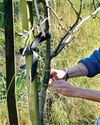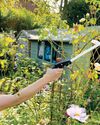
IF left to their own devices, many perennials start to lose their aesthetic value. Plants can become congested, overtake their allotted space or die out in the center of clumps, letting the scene down with their unsightly appearance. Worst of all, some become reluctant to produce a great display of flowers.
Fortunately, most overgrown, tired or awful-looking clumps can be rejuvenated by division – a quick and easy method of propagation that doesn’t require any specialist tools. Essentially, plants are lifted from the ground, split into several smaller pieces and then replanted to establish in warm, moist soil.
It’s most certainly not a job that should be carried out annually on the same plant, but most will benefit from being divided every three to five years, depending on their speed of growth. Among the species that respond well are alstroemeria, aster, bergenia, helianthus, kniphofia, rudbeckia and sedum (Hylotelephium).
This story is from the April 25, 2020 edition of Amateur Gardening.
Start your 7-day Magzter GOLD free trial to access thousands of curated premium stories, and 8,500+ magazines and newspapers.
Already a subscriber ? Sign In
This story is from the April 25, 2020 edition of Amateur Gardening.
Start your 7-day Magzter GOLD free trial to access thousands of curated premium stories, and 8,500+ magazines and newspapers.
Already a subscriber? Sign In

To dig or not to dig?
Should we be carrying out a full dig on plots now? Bob considers the pros and cons of the 'autumn dig' debate

The box ball blues
As if his beleaguered box hadn't already taken a beating, Toby now has to deal with some hungry box caterpillars

Save your own seeds
Masterclass on: seed saving

Strange sightings
Three unusual insects turn up in Val's garden in one day

A bolt from the blue!
Cornflowers are perfect for garden and vase

Winter moth prevention
Ruth shows you how to avoid maggoty tree fruits

Create a winter container
There are as many options as in summer

Lightweight gardening tools
AS well as being good for our mental health, gardening is also great exercise.

Autumn price round-up
AG finds better bargains in lesser-known brands

Rudbeckias
Rudbeckias are ideal for sunny summer patios and borders, with some able to survive our coldest winters